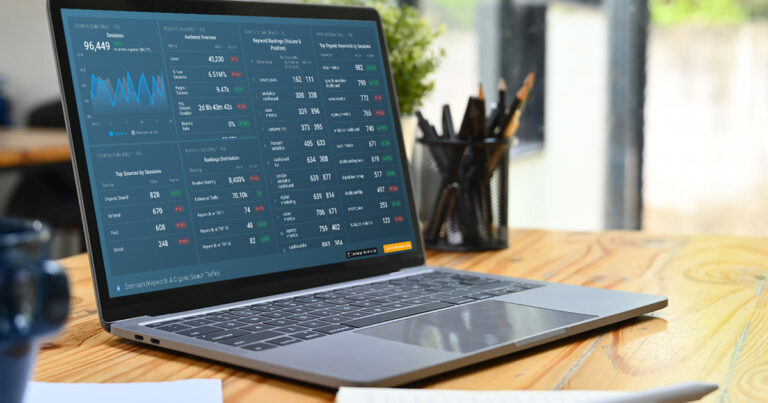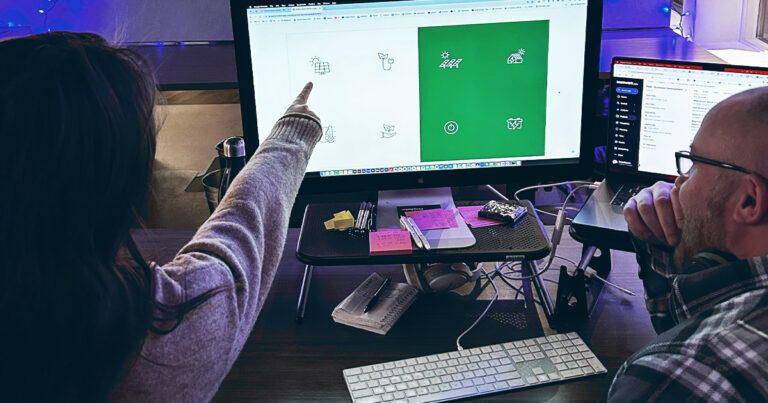The Pandemic-Led Push for Colleges and Universities to Step Up Their ADA Standards and Digital Accessibility
Perhaps your organization was among those that were loosely discussing a shift to greater digital accessibility even before COVID-19. However, after the pandemic began, those discussions were likely no longer “loose”. A need to make digital content accessible under the ADA and other disability standards quickly became imperative with the change to all-things remote. Among other industries faced with accessibility updates, COVID-19 certainly brought into sharper focus the relationship between the ADA and higher education.
What is the Importance of Digital Accessibility for Educational Institutions?
While this post will primarily focus on the need for digital accessibility in higher education, it is a critical accommodation across all levels of education, especially given the remote classroom models adopted during the pandemic.
The National Center for Education Statistics reports that 19 percent of all undergraduate students (aged 3-21) in the U.S. receive special education services under the Individuals with Disabilities Education Act (IDEA). These disabilities can include vision, motor, and hearing impairments, and cognitive or learning disabilities.
As these students move onto a postsecondary education, digital accessibility becomes a significant determining factor in their college or university selections. Institutions of higher education can attract more students by providing a more accessible digital environment; however, according to a 2016 study, 70% of major universities don’t provide assistive technologies.
That percentage is significant because we know almost every college and university enrolls students with disabilities.
It should go without saying that if digital content at an educational institution isn’t designed and developed to be accessible by individuals with any of these disabilities, it creates a significant barrier to learning. These barriers begin when an individual interacts with a college or university during their research and application processes. If they attend the school, the student will continue to face barriers throughout their education.
In fact, according to the Bureau of Labor Statistics. only 16.4% of people with disabilities graduate with a Bachelor’s degree, compared with 34.6% of students without a disability.
What Does Digital Accessibility in Higher Education Mean?
When we talk about the accessibility of digital content for institutions of higher education, it goes beyond your website. Specifically in education, digital accessibility also applies to:
- Documents and resources
- Digital communications such as email or chat
- Online learning environments for remote classrooms and collaboration
- Media such as video or audio content
- Web and mobile apps
- On-campus computers or workstations
- Learning software
- Instructional technologies
In educational environments, there is an important distinction to be made between making digital content fully accessible and making digital content accessible to people with disabilities. This area is one that the COVID-19 pandemic really brought to the fore – the notion that digital content should be accessible to all individuals regardless of a specific disability.
For example, individuals who have lower digital literacy, or those who might experience age-related challenges, should be afforded the same level of accessibility as individuals with disabilities. For example, some individuals may need captions to assist their learning experience, but don’t have a specific disability or use assistive technology.
In fact, the Center for User Experience at the University of Wisconsin-Madison cites Microsoft data showing that 62% of all users report having severe or mild difficulties using technology – but not all of those users identified as having a disability.
In a TEDx talk, Rhodes Scholar and Ph.D. student Rachel Kolb, who was born profoundly deaf, described the challenges students with disabilities face in college. She noted that only a third of deaf children finish high school, and of those who do go to college, only a fifth complete their degree.
How Can Educational Institutions Become More Digitally Accessible?
Educational institutions must be inclusive and accessible, and creating a culture of inclusion isn’t as simple as providing support services and counseling options. Among other initiatives, technology accessibility is critical.
Read More: Your Guide to an ADA-Compliance Website in 2022
- Establish and Follow a Clear Accessibility Standard. As we’ve noted in previous posts, there is no legal mandate to comply with the Americans with Disabilities Act when it comes to technology accessibility, but the Web Content Accessibility Guidelines (WCAG) 2.0 can help you define and set accessibility standards for your educational institution. The WCAG are formalized by law as the accessibility standard and are the recommended standard by the U.S. Access Board. For educational application, The WCAG include accessibility requirements such as video captioning and content that integrates with assistive technologies.
- Employ the 7 Principles of Universal Design. Developed in 1997, the 7 principles of universal design are intended to promote universally-usable products and environments. Following as many of these principles as possible ensures your educational institution is designing content for equitable consumption and more universal access.
- Train Instructors on New Technologies. Professors and instructors should be familiar with assistive technologies for individuals with disabilities to ensure they can help all of their students with classwork, especially as the classroom setting continues to be a remote environment in many places. Beyond technology training, instructors should also fully understand accessibility and how it is integrated into an online learning environment.
- Reach Out to Third Parties for Technology Upgrades. For educational institutions using third parties to design, develop, or maintain learning technologies, be sure to loop those entities into conversations about accessibility upgrades. Making vendors aware of necessary accessibility accommodations can help drive upgrades to their software to bring it in line with your institution’s digital accessibility goals.
- Consider Accessibility for All Previously In-Person Classes. Although we have largely resumed in-person learning at many educational institutions, there continue to be disruptions that require remote learning either temporarily or permanently. For those instances, your institution should have accommodations in place for individuals with disabilities to ensure they can continue to fully participate in a remote setting. Additionally, as some students attend their college or university completely online, those programs should be purpose-built to accommodate students with any type of disability or learning impairment.
Most importantly, review the standards set forth in Web Content Accessibility Guidelines and Title III of the Americans with Disabilities Act relative to accessibility in places of public accommodation. While the ADA doesn’t explicitly call out digital technology in its language around accessibility, the fact remains that organizations in any industry ultimately have to answer to individuals with disabilities if their digital content is inaccessible.
Accommodations for individuals with disabilities are also required under Section 504, a civil rights law that prohibits discrimination against students with disabilities, and all institutions that receive federal funding must comply with this law. Again, digital technologies are not explicitly mentioned but should be considered as critical for accessibility as any other accommodation.
In short, it’s best to comply. Educational institutions only have something to gain by creating a more inclusive environment for all students.
Implementing digital accessibility features can be a significant task, which is why it’s best to work with a digital agency that can identify and implement ADA and WCAG accessibility accommodations.
Connect with us to schedule a complimentary website accessibility review and learn what you can do to make your educational institution even more inclusive and attract more students.
If you want to get more familiar with ADA guidelines and how you can ensure accessibility under this and other laws, check out our guide to ADA web compliance.


